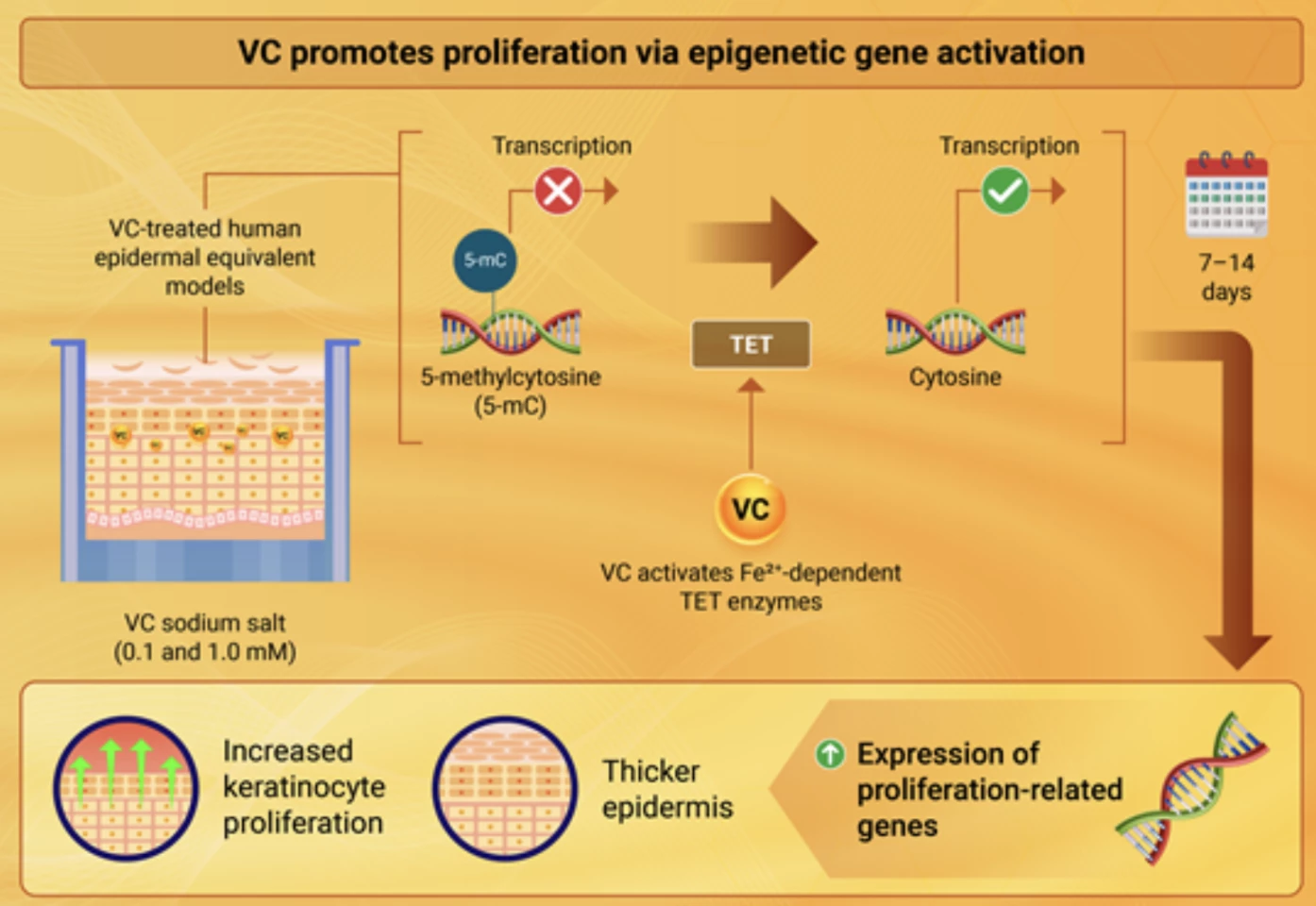Perhaps best known as a immune-system boost or antidote to scurvy, vitamin C has been found to rejuvenate aging skin by reactivating genes responsible for cell growth. By promoting DNA demethylation, vitamin C enhances the proliferation of cells that result in thicker and healthier skin. This discovery opens new avenues to genetically revive aging skin.
A collaborative team of researchers, led by Dr Akihito Ishigami at the Tokyo Metropolitan Institute for Geriatrics and Gerontology (TMIG), has discovered how vitamin C (VC) stimulates a mechanism that promotes healthy skin growth, potentially being able to restore the thickness of the epidermis – our protective, and visible, outermost layer of skin, which becomes increasingly compromised as we age.
"VC seems to influence the structure and function of epidermis, especially by controlling the growth of epidermal cells," said Ishigami. "In this study, we investigated whether it promotes cell proliferation and differentiation via epigenetic changes."
Using a 3D human skin model in the lab, the researchers added VC at 1.0 and 0.1 mM – tiny concentrations similar to what would be transported from the bloodstream into the epidermis – to it. By day seven, the epidermis was thicker, but the outermost layer of dead cells (the stratum corneum) was still stable. Then, by day 14, this layer had thinned, but the epidermis had continued to thicken, indicating that VC was having a deeper cellular impact. Tissue analysis showed significant higher number of not just cells but ones expressing the Ki-67 protein, a marker of cell proliferation.

Upon further investigation, the researchers uncovered how VC was activating genes linked to cell growth through the process of DNA demethylation. In general, DNA demethylation is activated when cells need repairing and occurs when DNA has its chemical "tag" removed so genes can be switched on without changing fundamental genetic sequences. Removing the tag here allows for these skin cells to ramp up production.
So VC facilitated the removal of these tags that silence the genes driving skin cell growth. This isn't a surface-level mechanism, either; the epidermis is mostly made up of keratinocytes, which are cells formed in many layers below that migrate to the surface. Stimulating their growth genetically means more form that protective epidermis layer, resulting in thicker, better structured skin than what our bodies naturally produce as we age.
"We found that VC helps thicken the skin by encouraging keratinocyte proliferation through DNA demethylation, making it a promising treatment for thinning skin, especially in older adults," added Ishigami.
While the biochemical processes involved are a little more complex – which is covered in depth in the team's paper – VC-triggered keratinocyte cell growth could potentially restore damaged and thinning skin, turning the clock back on the appearance of the epidermis.
The obvious challenge, however, is the delivery of VC to the genetic target, deep below the protective outer layers of skin tissue – something topical application and oral supplements are unlikely to achieve. Nonetheless, this discovery opens the door to developing new therapeutics, be it patches or injectables, that target the keratinocyte-activating genes without the supplement circulating through the body and potentially interfering with other cellular processes. And any treatment would most likely be localized, or confined to a patch of skin.
"Intracellular VC uptake increased epidermal thickness, cell proliferation, and global levels of 5-hydroxymethylcytosine DNA," the researchers wrote. "Notably, these effects of VC were attenuated by an inhibitor of the ten-eleven translocation (TET) enzyme. DNA microarray and whole-genome bisulfite sequencing analyses revealed that 12 genes related to cell proliferation were significantly upregulated by VC.
"Our findings provide insight into how VC increases epidermal thickness by promoting keratinocyte proliferation through the DNA demethylation of proliferation-related genes," they continued. "VC is a promising molecule that can be used as developing treatment for epidermal thinning, including in aging."
The research was published in the Journal of Investigative Dermatology.
Source: The Tokyo Metropolitan Institute for Geriatrics and Gerontology






